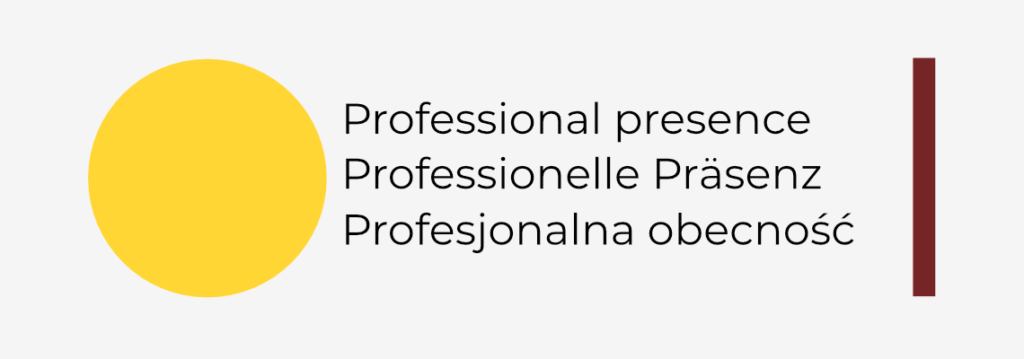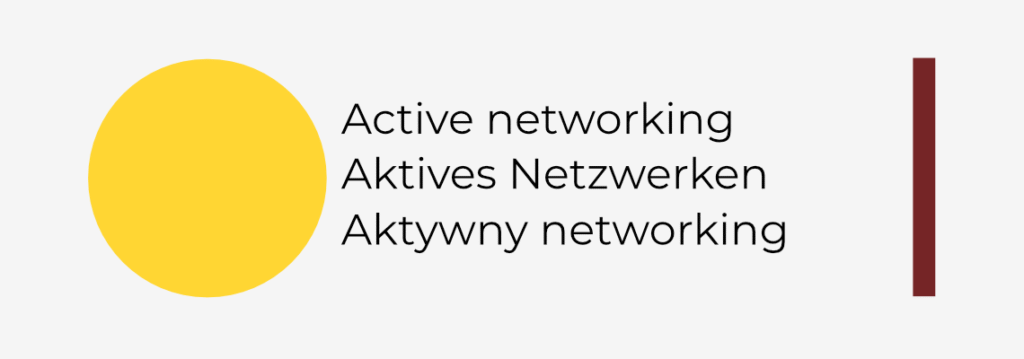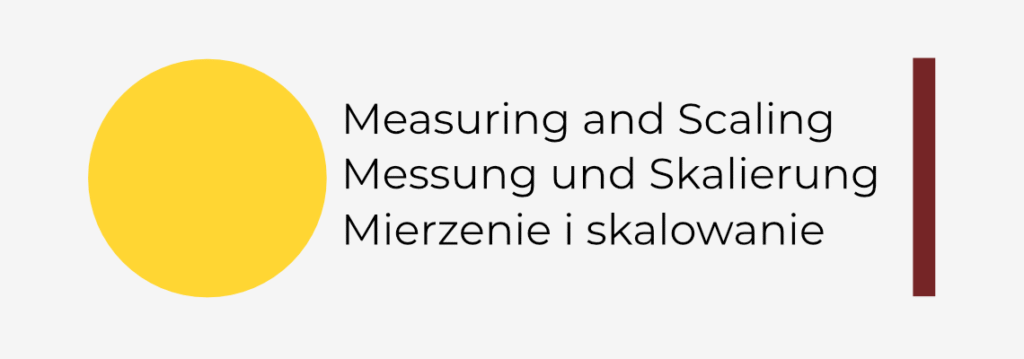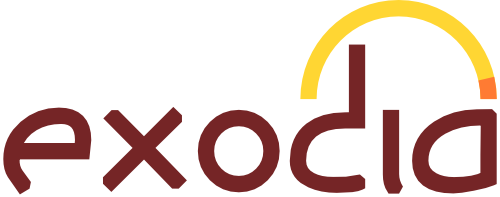Your company page is on LinkedIn, you post regular updates, but the only interaction comes from your own employees. Does that sound familiar? It’s understandable to wonder if the effort is even worth it. Many software companies treat LinkedIn like a channel for press releases rather than a strategic tool for lead generation. They miss the enormous opportunity to build valuable business relationships through direct engagement and establishing authority.
That’s why we’ve prepared this guide for you. LinkedIn is not just another social network. For B2B software companies, it is by far the most powerful platform to build trust, nurture relationships, and directly increase revenue—provided you have the right strategy. With this guide, you will get a complete A-to-Z blueprint. We will walk you through the entire process: from optimizing your profiles and creating compelling content to implementing engagement strategies that turn passive followers into active leads.
Part 1: The Foundation – Optimizing Your Professional Presence

Before you actively create content and interact with your target audience, your foundation must be solid. Your LinkedIn profiles are your digital storefront. An incomplete or unclear profile can deter potential customers before you’ve even had a chance to speak with them. In this part, we will look at how to optimize your company page and your employees’ profiles to make a professional and trustworthy first impression.
1.1 The Company Page – More Than a Digital Business Card
Why is this important? Your company page is often the first stop for prospects who want to learn more about you. It must clearly communicate to visitors within seconds what problem you solve and for whom. An optimized page serves as a central anchor for your brand and creates a professional foundation for all your future activities.
The Solution: Design a clear and customer-centric page. View your page through the eyes of a potential customer. Every element should be designed to build trust and communicate the value of your solution.
Real-World Example: Optimization Checklist
- Professional Banner: Design a banner that not only displays your logo but also visualizes your core value proposition or a clear tagline.
- Compelling About Section: Use the Problem-Solution-Result formula. First, describe your target audience’s problem, then how your software solves it, and finally, what results customers can expect.
- Strategic Call-to-Action (CTA): Customize the CTA button to match your most important goal. If you want more demos, use Request a demo. If you want to drive traffic to your website, use Visit website.
1.2 Employee Profiles – Your Secret Sales Superstars
Why is this important? People buy from people, not from logos. The personal profiles of your founders, sales staff, and subject matter experts are far more effective than the company page at building trust and authentic relationships. Furthermore, LinkedIn’s algorithm favors content from personal profiles, giving you significantly greater reach.
The Solution: Turn your employees into brand ambassadors. Encourage your team to view their profiles not just as a resume, but as a customer-focused landing page. An optimized profile shows not only what a person has done, but also what value they create for their target audience.
Real-World Example: Checklist for a Customer-Centric Profile
- The Headline: Replace the job title (CEO at Company X) with a value proposition (I help software companies generate more leads through strategic content marketing).
- The About Section: Tell a short story. Why do you do what you do? What problem are you passionate about solving? This creates a personal connection.
- The Featured Section: Use this section prominently to showcase your most important content. Link to your best case studies, whitepapers, or a demo booking link here.
Part 2: The Content Strategy for LinkedIn

With an optimized profile, you’ve set the perfect stage. Now it’s time to fill that stage with the right content. A well-thought-out content strategy is the key to turning passive viewers into active followers and, ultimately, qualified leads. In this part, we’ll look at how to find the right mix of content, establish a compelling posting rhythm, and use the formats that really work on LinkedIn.
2.1 It’s All in the Mix – Company vs. Personal Content
Why is this important? If you only post from your company page, you miss out on the enormous reach and trust that personal profiles build. Conversely, focusing solely on personal profiles can lead to your company’s brand being neglected. The right balance is crucial for holistic success.
The Solution: Apply the 80/20 rule. Your strategic rule of thumb should be: 80% of activities and content come from the personal profiles of your key individuals (founders, sales, experts), and 20% come from the official company page.
Real-World Example: The Right Content Distribution
- Content for Personal Profiles (80%):
- Industry Insights & Opinions: Share your perspective on current trends.
- Personal Experiences & Learnings: Tell stories from your professional life.
- Helpful Tips & Guides: Offer direct value to your target audience.
- Behind-the-Scenes: Provide glimpses into your company culture.
- Content for the Company Page (20%):
- Official Announcements: Product updates, new partnerships, press releases.
- Publication of Case Studies & Whitepapers: Share your most important marketing assets.
- Job Postings & Team Insights: Strengthen your employer brand.
2.2 The ‘Give, Give, Ask’ Framework for Compelling Posts
Why is this important? Anyone who constantly promotes their own product on LinkedIn is quickly perceived as a spammer and loses followers. You need to build trust and a relationship by generously providing value first, before asking for attention for your offer.
The Solution: Offer more value than you ask for. Structure your content according to a simple principle: Give, Give, Ask. This means the vast majority of your posts should be aimed at helping your target audience without expecting anything directly in return.
Real-World Example: The Posting Rhythm
- Post 1 (Give): Share a helpful tip that solves a common problem for your target audience.
- Post 2 (Give): Share a personal experience or a lesson learned from a project.
- Post 3 (Ask): Promote your next webinar or link to a relevant case study on your website.
2.3 Formats That Really Work on LinkedIn
Why is this important? Not all formats are created equal. The LinkedIn algorithm values different formats differently, and your target audience interacts more or less depending on the presentation. Choosing the right format can multiply your post’s reach.
The Solution: Use a mix of proven formats. Experiment with different formats to see what resonates best with your audience.
Real-World Example: The Most Effective Formats
- Text Posts: Short, concise posts with a strong opening sentence (hook) that encourages readers to continue. Ideal for opinions and personal stories.
- Image Galleries (Carousels): Upload a PDF to create an engaging image gallery. Perfect for step-by-step guides or visualizing the key takeaways of a blog article.
- Polls: A simple way to quickly boost interaction and get valuable feedback from your audience.
- Short Videos (1-3 minutes): Create a personal connection by speaking directly to the camera. Ideal for short tips or insights.
Part 3: The Engagement Engine – From Passive Poster to Active Networker

You have optimized profiles and a solid content strategy. But true success on LinkedIn comes not from simply broadcasting information, but from active engagement and building relationships. In this part, we’ll look at how to transition from a passive poster to an active networker and initiate valuable conversations through targeted interaction.
3.1 The Invaluable Power of Comments
Why is this important? Commenting on others’ posts is the fastest and most effective way to build visibility with your target audience and be perceived as an expert. Every thoughtful comment is like a mini guest post on someone else’s stage. You position yourself without having to create your own content and attract relevant people to your profile.
The Solution: Have valuable conversations in the comments. Don’t see commenting as a chore, but as a strategic opportunity. Leave thoughtful, valuable comments daily on the posts of industry leaders, potential clients, and partners.
Real-World Example: The Strategy for Meaningful Comments
- Identify Key People: Follow 10-15 industry experts and potential ideal clients whose content your target audience also reads.
- Add Value: Don’t just say Great post!. Add your own perspective, ask a follow-up question, or share a relevant personal experience.
- Goal: Your comment should be so valuable that others like and reply to it. This increases your visibility exponentially.
3.2 The Art of the Direct Message (DM) – Acquisition Without Spam
Why is this important? Direct messages are where conversations eventually turn into leads and business relationships. However, an impersonal, clumsy sales message can ruin your reputation and close doors forever. The right approach is crucial to build trust instead of being perceived as a spammer.
The Solution: Build a relationship before you pitch anything. Successful DM outreach is a multi-step process based on appreciation and genuine interest. Never send an immediate sales pitch after connecting.
Real-World Example: A 3-Step Outreach Process
- Interact Publicly First: Before sending a connection request, like and comment on a few of the person’s posts. This way, your name is already familiar.
- Send a Personalized Request: Always include a short, personal note with your connection request. Refer to a mutual connection, an interesting post, or a commonality in your profiles.
- The First Message After Connecting: Thank them for connecting. Ask an open-ended question related to them or their work, not to you.
- Bad Example (Spam): Thanks for connecting! Are you currently looking for a solution for X?
- Good Example (Relationship Building): Thanks for connecting, [Name]! I found your recent post on Y very interesting. The point about Z really made me think. How did you arrive at that insight?
Part 4: Measuring and Scaling Your LinkedIn Activities

Your LinkedIn activities are up and running, but how do you know if your efforts are paying off?. Without systematically measuring your results and having a plan for scaling, your success remains a matter of chance. In this part, we’ll look at how to track the right metrics and involve your entire team to grow your reach exponentially.
4.1 KPIs That Really Matter
Why is this important? You need to know if your time investment is worthwhile. Many focus on superficial metrics like likes or follower counts. While these vanity metrics are nice, they say nothing about actual business success. You need Key Performance Indicators (KPIs) that reflect progress toward your sales goals.
The Solution: Focus on meaningful metrics. Measure the activities that have a direct link to building relationships and generating leads. This allows you to adjust and optimize your strategy based on data.
Real-World Example: KPIs for Your Reporting
- Increase in Profile Views: Shows that your comments and posts are drawing the right people to your profile.
- Engagement Rate of Your Posts: How many people interact (like, comment, share) relative to your reach? This is an indicator of your content’s relevance.
- Number of Conversations Started: How many new, meaningful conversations have you initiated in direct messages? This is your most important leading indicator for potential leads.
- Number of Leads Generated: How many of these conversations led to a concrete next step (e.g., a demo call or a strategy session)?
4.2 Employee Advocacy – Turn Your Team into Brand Ambassadors
Why is this important? You can’t do it all alone. When you empower and encourage your entire team to be active on LinkedIn, you scale your reach and credibility exponentially. The collective reach of your employees’ profiles is often many times higher than that of your company page.
The Solution: Establish a simple Employee Advocacy program. Make it as easy as possible for your team to participate. It’s not about turning everyone into top influencers, but about creating a culture of sharing and support.
Real-World Example: Building Blocks for Your Program
- Provide Content Suggestions: Create an internal channel (e.g., in Slack or Teams) where you regularly share interesting industry articles or post suggestions that your team can use for inspiration.
- Encourage Sharing: Actively ask your team not just to like important company posts, but to share them with their own short comment. This boosts reach enormously.
- Celebrate Successes: Positively highlight in internal meetings when a team member had a particularly successful post or when their engagement led to an interesting contact.
Conclusion
A successful LinkedIn presence is the result of a strategic combination of three core areas: an optimized presence, valuable content, and proactive, authentic engagement. By consistently working on these three pillars, you will transform the platform from a passive network into an active channel for lead generation. And thus, it will become an indispensable part of content marketing for software companies.
Remember: building trust and relationships is a marathon, not a sprint. Consistency is the crucial key to long-term success and developing valuable business relationships from conversations.
If you want to speed up this process and develop a customized strategy for your company, let’s talk.

